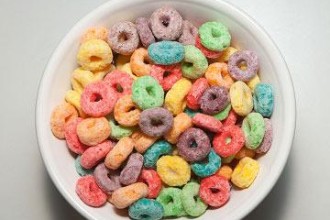I once visited a palm reader who on booking my appointment, asked me to arrive nail varnish free. At the time I thought it was a strange request, but years later, having studied nutrition, the penny dropped!
Your fingernails act as a map, revealing your physical health and general well-being. Poor quality nails may reveal important clues about underlying disorders, food intolerances or nutritional imbalances. They may also signal how well you are digesting and absorbing nutrients from your food; low levels of stomach acid, which prepares minerals for absorption, and digestive enzymes, are a common problem. And if the body can’t digest and absorb food adequately, your nutrient intake will be compromised. Your body will prioritise the distribution of nutrients, giving them to vital organs first and nails and skin last – so if your nails are in poor condition, chances are you’ll be experiencing skin issues too!
A nutritional therapist, or canny palm reader, can assess the texture, colour and shape of your nails to build up an accurate picture of your health. Here’s what they look for:
- Texture:
Brittle nails: Could indicate a sluggish liver from lack of vegetables, pulses and fish.
Flaky nails: Indicate an over-consumption of sugar, additives and pharmaceutical drugs.
Horizontal ridges: May suggest high levels of stress or chronic infection
Vertical ridges: Could point to sluggish, congested liver, kidneys and digestion, congestive heart failure and Non insulin dependent diabetes
Tip: cut down on refined foods such as sugar and flour, increase your consumption of fresh vegetables and pulses.
- Colour:
Healthy nail beds should be pink due to the rich blood supply underneath them. Any changes in colour, if not the result of local trauma could be an important indicator of deficiencies or lack of nutrients.
White nails: If not a result of physical damage, white spots on the nails may suggest a nutrient deficiency, specifically, a lack of zinc or low iron status. It may also indicate heart disease, poor liver function or circulation. Increasing your magnesium intake should help [nuts & seeds and dark green leafy vegetables].
Dark red nails: Could indicate high cholesterol due to excess of dairy, sugar and salt. This can lead to an underactive liver and blocked arteries. Replace processed foods with whole foods increase fresh vegetables [ insert veg dodgers link] and have at least five glasses of water per day.
Purple nails: Point to digestive disturbances caused by over consumption of sugar, pharmaceutical drugs, fruits and juices. Avoid tropical fruit as these have the highest sugar content and eat plenty of seasonal vegetables and pulses.
White Spots: Could indicate a lack of zinc, needed for mineral breakdown in the process of digestion. It could also suggest high sugar consumption from alcohol, fruit or chocolate. Zinc-rich foods include shellfish and chicken, you may want to consider zinc supplements.
- Shape:
Spoon nails have lost their convexity, are abnormally thin and can look flat. Ruling out nervous chewing, possible causes include:
Fungal infection: Can indicate excess yeast in the body, usually as a result of a high sugar, high yeast diet. Reduce foods that feed yeast including sugar, refined carbohydrates such as white bread and pasta and alcohol. Other foods that encourage yeast growth because they contain high levels of yeast include bread, dried fruit, mushrooms, soy sauce, vinegar, peanuts and cheese. Try to eliminate these foods from your diet for two months, focussing your diet on meat, fish, fresh vegetables, brown rice, and oats. Consider taking a good probiotic containing acidophilus and bifidus bacteria to help restore the natural balance of organisms in your gut and control yeast growth in the body.
Iron deficiency anaemia: If spoon nails are accompanied by tiredness, lethargy, shortness of breath, heart palpitations and a pale complexion see your GP who can usually diagnose the condition with a simple blood test.
If you suspect a nutrient deficiency; a high strength multivitamin and mineral can help, whilst a supplement containing digestive enzymes and HCL can boost digestion and impact the condition of your nails, just make sure you don’t you take it if you’ve had stomach ulcers or other stomach problems. Also, it’s obvious, but often overlooked – make sure you protect your nails from external damage, such as harsh detergents and water.
Shani Shaker BA (hons), dipION, mBANT, CNHC is a registered nutritional therapist with a focus on regenerative and functional nutrition, disordered eating, addiction and mental health. Based in London her services include one-to-one coaching, group classes and Skype sessions. Contact her at [email protected]
Disclaimer: The information provided is intended for your general knowledge only and is not a substitute for professional medical advice or treatment for specific medical conditions. Please consult your healthcare provider with any questions or concerns you may have regarding your condition. Supplementation should only be temporary. If you’re eating a nutrient-rich diet, extra supplementation should only last for a month or two, just long enough to resolve the deficiency




